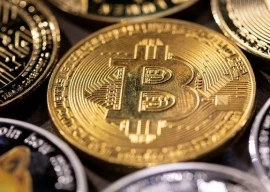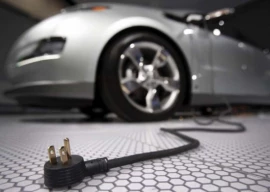To investigate the turbulent and complex history of the sub-continent — the warring rulers, myriad conquests and royal intrigues — seems like a daunting task.
However, one can simply examine one thing to uncover a Pandora box of chronological details: the history of money in the region. The changing inscriptions on coins alludes to the rise and fall of rulers and kings, the switch from coins to paper currency signifies a leap in technological advancement and the use of money stamps is testimony to the unavailability of paper currency during times of war.
And this history of monetisation— recounted through a treasure trove of cowrie shells, coins, stamps and notes — is showcased in the State Bank of Pakistan (SBP) Museum & Art Gallery. This pink sandstone structure with looming window shutters and jumbo doors was inaugurated on July 1, and previously housed the Bank of India before partition and the SBP’s library. Inside the mammoth colonial structure, with a refurnished interior boasting spangling spotlights and a renovated brass and glass skylight, are neatly organised sections displaying the history of money over the millennia.
Chronology of money
Perhaps the most interesting section of this museum is the coinage section, neatly divided into pre-Islamic and Islamic periods. The pre-Islamic display starts with the punchmarked coins used by Greeks and Aryan invaders dating back to the 6th and 7th century BC. The currency of this epoch is conspicuous for the Hellenistic trait of bearing the imprint of the ruling monarch’s portrait.
The chronological exhibit gives way to the second section showcasing coinage from the ‘Islamic period of India and Pakistan’ – a misleading description since Pakistan did not exist till 1947 and non-Muslim influences remained strong in the entire sub-continent even after invasions by Muslim rulers. On display are the copper, gold and silver currencies of the all-too familiar Muslim conquerors of history books — the Ghaznavids, the Ghauris and the Mughals etc. The changing shape, symbols and language on the coins attest to the sub-continent’s turbulent political past. Interestingly, when new invaders successfully captured an area, they used the coins of the old conquerors before introducing their own, but overstriked their own names and symbols on them.
As fascinating as this linear trajectory of money is, it does not add anything radically new to the viewer’s knowledge. In fact the exhibited currency, which matches the timeline of most textbooks in Pakistan, highlights that the complex history of the sub-continent is always confined to simple timelines and neat linear paths.
Artifacts and art work
Apart from the sequential record of currency, the SBP museum houses fascinating historical artifacts and art work. There’s the country’s first ATM machine on display; first employed by Habib Bank in 1988, it closely resembles a photocopying machine. There’s also coin-minting apparatus — a cumbersome green object with a wheel-like posterior — and a 100-year-old gold-weighing scale, refurbished with golden paint.
The second storey of the museum’s building houses a small art gallery showcasing the works of the renowned rebel artist, Sadequain, and a few other contemporary artists such as Marium Khan and Amir Hasan Rizvi. Sadequain’s murals, originally made for the SBP, are majestic illustrations depicting distorted life-sized figures, whose coarse texture comes from the fine lines etched into the paint by a blade.
The museum, displaying lengthy historical descriptions and staffed with trained tour guides, is the first of its kind in Pakistan and is now open for public viewing.
Published in The Express Tribune, November 2nd, 2011.



1725612926-0/Tribune-Pic-(8)1725612926-0-165x106.webp)













COMMENTS
Comments are moderated and generally will be posted if they are on-topic and not abusive.
For more information, please see our Comments FAQ